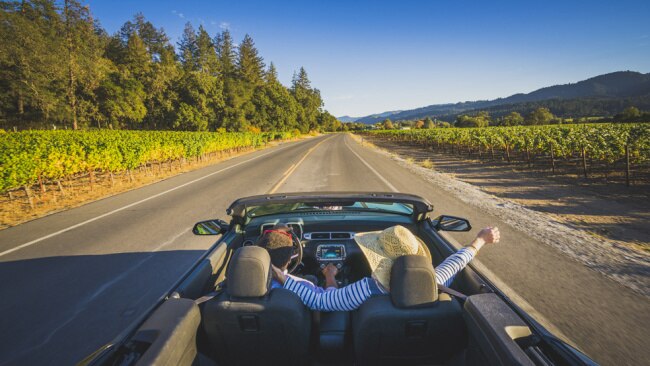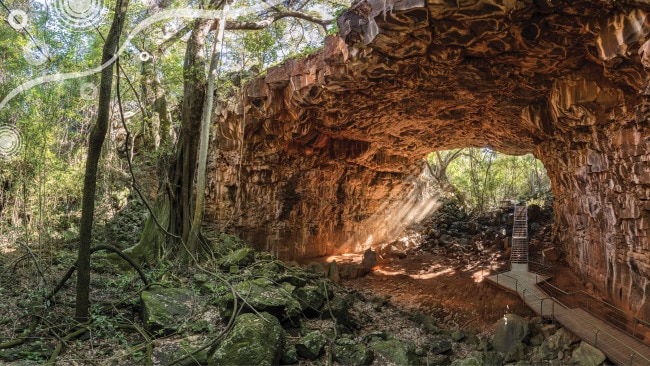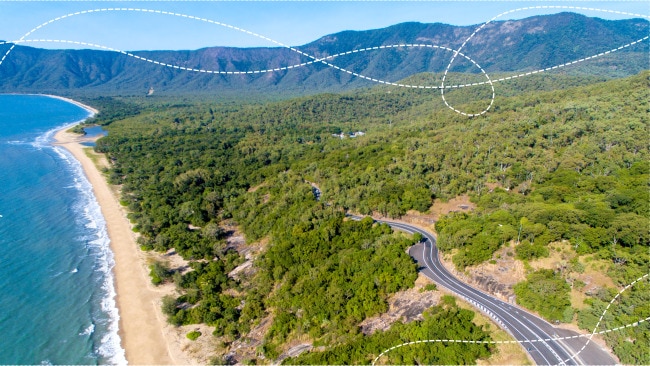Why California is best explored by car
A classic road trip is the best way to explore California. But there are plenty of quirks and road rules to keep you on your toes. Here’s what to look out for.

Road-tripping is the best way to explore California’s amazing diversity, taking you from ancient Sequoia forests one day to urban glamour the next. With these time and money-saving tips, the only thing left to worry about is the playlist.
Imagine driving along one of the world’s most beautiful coastlines… windows down, breathing in the salty sea spray. You turn the radio up as you take the next corner, only to be greeted by a lush Redwood forest that’s just calling out to be explored on foot.
Welcome to California — a state just made for road trips.
In fact, the 1000km-coastal route from its northern border with Oregon to the margherita-fueled bars of San Diego in the south is often cited as one of the most scenic road trips in America. Yet most visitors don’t realise California is also home to more national parks than any other US state. A well-planned road trip is not only the best way to experience the best that California has to offer, it can also save you time and money. And it’s much easier than you might think.
MAP YOUR ROUTE
Before you commit to a route, use Google maps to estimate how long each leg of the journey should take. The general rule is to drive no more than three to four hours a day in order to really enjoy your time, plus don’t forget to factor in rest days to explore stops along the way. Avoid larger cities at peak hour and keep up on current traffic conditions using real-time traffic websites, especially for Los Angeles and San Francisco. And don’t worry if you don’t feel comfortable driving downtown; car hire companies also have branches outside the city centre, so you can drop off your wheels and then easily catch a taxi or public transport to your accommodation.
CREATE A WATERTIGHT BUDGET
Road trips are pretty simple to plan a budget for as you can quite accurately calculate car rental costs and petrol costs (ask the rental company to help you estimate this), as well as the number of nights you’ll need to book accommodation for. Then, add a rough budget for activities, food and incidentals (such as tax and gratuities) and you’re all set! In terms of parking costs, most hotels offer secure parking, otherwise look for street parking near your accommodation. Check the street signs as in some areas you’ll need to move on by 8am.
CHOOSE THE APPROPRIATE CAR
When it comes to car rentals, size doesn’t always matter! Large cars are perennially popular in America but if you’re mainly visiting larger cities or doing long distance, they may not be the best option (parking a large car on a busy street can be challenging and they will require more petrol). Hertz, Avis and Budget all offer a range of cars you can easily pre-book before arriving in California, including ones with child seats, and they freely offer advice as to which model will suit you best. Don’t forget to take out travel insurance to cover any excess payment in the case of an accident, and remember that it can be a good idea to choose the option to return the vehicle with a ‘prepaid tank’, especially if you’re running to catch a flight or have a tight schedule.
BOOST YOUR ROAD RULE KNOWLEDGE
Although most of the rules are similar to Australia’s (no texting or drinking while driving), it’s good to be familiar with some of the local stipulations. You can have a quick look over the California Driver’s Handbook online, if you’d like to brush up before your trip. Note: most speeding limits are enforced from the air, then radioed to a local parole car, so best to stick to the speed limit at all times!
GET CONNECTED
One of the most important decisions to make is how to communicate on the road. Not only will you need to navigate your route, but you may also need to use a phone to make reservations at hotels or restaurants, play podcasts, check local traffic conditions and access your emails. One option is to buy a US sim or a US data plan for your smartphone. You can purchase these at LAX airport when you arrive, alternatively wait until you get to a convenience store where they’ll typically be cheaper. Before you leave Australia, check you can unlock your phone to accept international sim cards.
Buying a car charger can be a lifesaver as well, as using apps and maps will drain your battery quickly. Navigating using Google maps is a good option, though it can drain data and batteries. Luckily, you can also download Google Maps and use them offline. They work exactly the same as they do online in terms of planning your route, but they won’t be able to offer current traffic conditions. Other options include hiring a GPS from the car rental company or even using old-school paper maps!
KNOW THE PETROL STATION ETIQUETTE
In California, you will come across full-service and self-service petrol stations. For self-service, you’ll need to pre-pay for your petrol, and you may be asked for a US zip code if you try to pay at the pump. That is easily avoidable by going into the cashier and paying directly to them with your credit card. No zip code will be required, plus you can stock up on road trip snacks…
BE PREPARED FOR SNOW CONDITIONS
There are a lot of climate variations in California, so you might be wearing a t-shirt in Big Sur one day and be among snow in Lake Tahoe the next. Make sure you check for any road closures in winter, especially around Yosemite National Park and Tioga Pass, and then assess whether you need snow chains as in some areas you’ll get fined without them. Local companies rent snow chains, or you can buy them pretty cheaply along the way as well.
Start planning your 2019 California road trip now with more ideas, itineraries and tips from Visit California. The Golden State is waiting for you.



